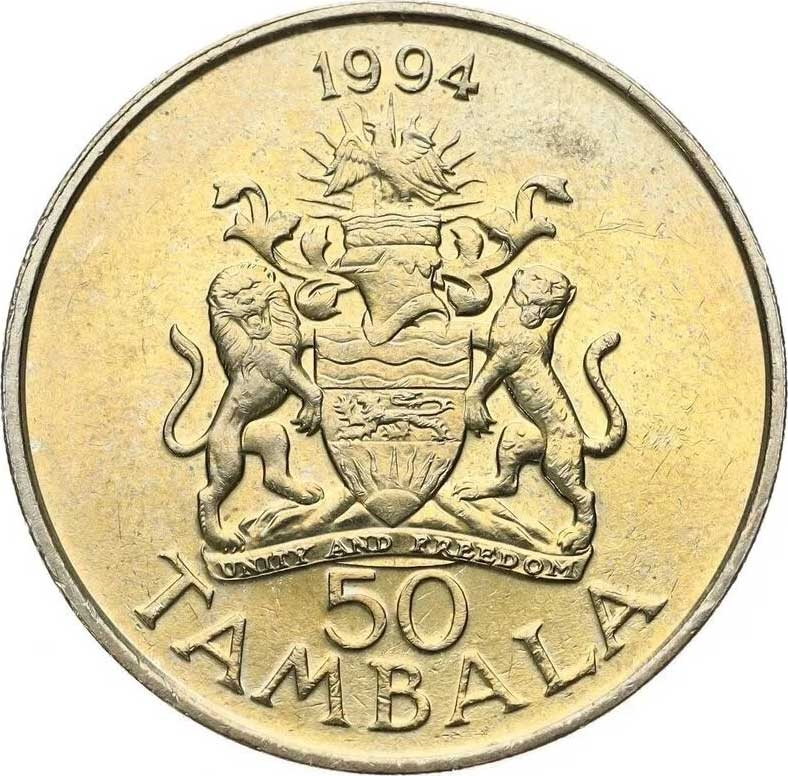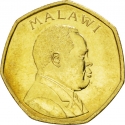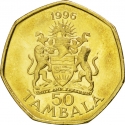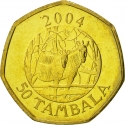You are about to finish your registration. Please check your mailbox (including spam folder). There should be a letter with a confirmation link. Check setting to make sure that your e-mail address is correct.
Send letter againDescription
The kwacha, introduced as Malawi's currency in 1971, derives its name from the Chichewa word meaning "dawn," and tambala, meaning "rooster," symbolizes the hundred tambala in one kwacha.
Engraver: Paul Vincze
Obverse

|
Depicts a portrait of Hastings Banda right, country name in banner below. MALAŴI |
|---|---|
Reverse

|
Depicts the coat of arms of Malawi, date and denomination in English letters below. 1994 |
| Edge |
50 Tambala
Republic
KM# 19
Characteristics
| Material | Nickel Brass |
| Weight | 11.35 g |
| Diameter | 30 mm |
| Thickness | 2 mm |
| Shape |
|
| Alignment | Medal |





